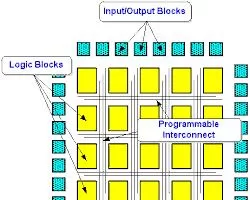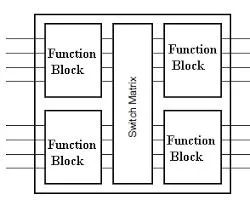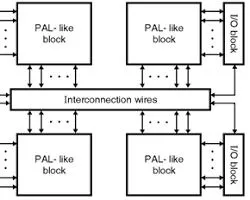
CPLD Basics: Concepts, Architecture, Applications and CPLDs vs FPGAs
September 05 2023 
Inquiry
Global electronic component supplier AMPHEO PTY LTD: Rich inventory for one-stop shopping. Inquire easily, and receive fast, customized solutions and quotes.
QUICK RFQ
ADD TO RFQ LIST
In this blog, we will discuss the basics of CPLD, including Architecture of CPLD, Applications of CPLD, CPLDs vs FPGAs, and so on.
What is a Microchip CPLD?
A Complex Programmable Logic Device (CPLD) is a combination of A bank of macrocells and a completely programmable AND/OR array. The AND/OR array may execute a wide range of logic operations and is configurable. Functional units known as macrocells can execute combinatorial or sequential logic and also have the additional flexibility of true or complement as well as a variety of feedback pathways.
History of CPLDs
In the early 1980s, the first CPLDs were released. They were created as a more adaptable and affordable substitute for conventional gate arrays. In a short period of time, CPLDs became widely used in a wide range of applications. Here are a few key events in the development of CPLDs:- The first CPLD is introduced by Altera in 1988 with the MAX5000.
- Actel releases the ProASIC family of CPLDs in 1990.
- The LatticeECP1 series of CPLDs first introduced by Lattice Semiconductor in 1993.
- The Spartan family of FPGAs, which compete with CPLDs, is first introduced by Xilinx in 1995.
- The Stratix family of FPGAs, which compete with CPLDs further, is introduced by Altera in 2000.
- 2005 saw Microchip purchase Actel, a significant CPLD producer.
- The MachXO series of CPLDs is introduced by Lattice Semiconductor in 2010.
- The Artix family of FPGAs, which provides a less expensive alternative to the Spartan family, is introduced by Xilinx in 2015.
Video related to CPLD
Architecture of CPLDs
The following three components make up a CPLD in most cases:- PLBs, or programmable logic blocks: The PLBs are the fundamental components of a CPLD. They can be set up to carry out a number of different logical operations. A few flip-flops, a few logic gates, and some control logic are frequently included in each PLB.

- Programmable interconnect: The PLBs are connected by the programmable interconnect. It enables communication between PLBs and with the outside world. A grid of wires and switches typically forms the programmable interconnect.

- Memory block: Information and instructions are kept in the memory block. Typically, the memory block consists of a few registers and some control circuitry.

Applications of CPLDs
- Networking devices: CPLDs are used in switches, routers, and other networking equipment. They can be used to construct routing tables, protocols, and other features.
- Automotive systems: CPLDs are utilized in automobiles and other vehicles. They can be utilized to operate transmission control units, engine control units, and other systems.
- Industrial control: Systems for industrial control employ CPLDs. They can be used to operate machinery, robots, and other devices.
- Consumer electronics: CPLDs are utilized in gadgets like TVs, DVD players, and cameras. They can be used to implement functionality including user interfaces, audio processing, and video processing.
- Medical equipment: CPLDs are utilized in equipment like defibrillators and pacemakers. They can be utilized to manage how these gadgets function.
- Equipment for testing and measuring: CPLDs are utilized in this equipment. They can be utilized to implement logic operations and manage test apparatus control.
- Applications in the military and aerospace: CPLDs are employed in these fields. In addition to carrying out other tasks, they can be utilized to create control systems.
What are CPLDs used for?
Field programmable gate array configuration data are loaded from non-volatile memory using CPLD technology. Due to their small size and low power consumption, CPLDs are often employed in a variety of applications, such as in price-sensitive, battery-operated portable devices. Additionally, CPLDs can be utilized to implement a wide range of tasks, such as:- Logic gates: Simple logic gates like the AND, OR, and XOR gates can be implemented using CPLDs.
- Finite state machines: Finite state machines are used to regulate the behavior of electronic systems, and they can be implemented using CPLDs.
- Data converters: CPLDs are capable of converting data between different formats.
- Communication interfaces: CPLDs are capable of implementing communication interfaces like Ethernet and serial ports.
- Timing controllers: CPLDs can be used as timing controllers to regulate the timing of electronic systems.
CPLDs vs FPGAs
Although both CPLDs and FPGAs are programmable logic devices, they differ in their advantages and disadvantages. CPLDs have fewer logic resources but are smaller and less expensive than FPGAs. FPGAs have more logic resources than CPLDs, but they are bigger and more expensive. Here is a table that summarizes the key differences between CPLDs and FPGAs:| Feature | CPLD | FPGA |
| Logic resources | Fewer | More |
| Size | Smaller | Larger |
| Cost | Less expensive | More expensive |
| Flexibility | Less flexible | More flexible |
| Performance | Lower | Higher |
| Power consumption | Lower | Higher |
Conclusion
CPLDs are a flexible and effective tool that may be used to create a wide range of digital circuits. They are an excellent option for applications that need small size, cheap cost, and moderate logic complexity.Related Articles
- ·Stratix 10 VS Stratix V: Which FPGA is Right for Your Next Project?
- ·Intel Xeon Platinum 8454H vs AMD EPYC: Which Reigns Supreme?
- ·A Deep Dive into the AMD EPYC 4564P Processor
- ·MSP430F5438A vs MSP430F5529: A Detailed Analysis of Their Capabilities
- ·Comparing MSP430F6659 and MSP430F5419A: Which One is Right for Your Project?
- ·Exploring the Features of MSP430F5529 and MSP430F5638 Microcontrollers
- ·Demystifying 20 Microcontroller Projects for Beginners
- ·Unveiling the Ultimate Guide to Microcontroller Programming
- ·4680 Battery: Unveiling the Power Potential of the Next-Gen Cell
- ·Exploring the Case Studies on Arduino Applications
Populer Posts
TMS320C6748EZCE4
Texas Instruments
SAF7741HV/N125Z557
NXP Semiconductors
TMX320C6745BPTP3
Texas Instruments
TMS320C28341ZAYT
Texas Instruments
TMS320C6746BZWT3
Texas Instruments
ADSP-2189NKCAZ-320
Analog Devices Inc.
TMS320VC5501ZZZ300
Texas Instruments
TMS320DM642AGDK7
Texas Instruments
MSC8156EAG1000B
NXP Semiconductors
SAF7746HW/N100,557
NXP Semiconductors
TMS320F2812GBBAR
Texas Instruments
ADSP-BF512KSWZ-3
Analog Devices Inc.
